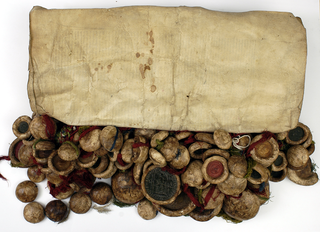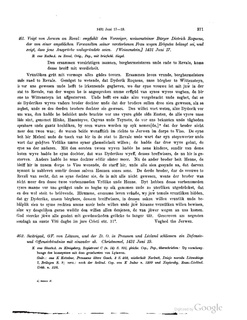 W
WThe Gollub War was a two-month war of the Teutonic Knights against the Kingdom of Poland and the Grand Duchy of Lithuania in 1422. It ended with the signing the Treaty of Melno, which resolved territorial disputes between the Knights and Lithuania over Samogitia that had dragged on since 1398.
 W
WPeace of Brześć Kujawski was a peace treaty signed on December 31, 1435 in Brześć Kujawski that ended the Polish–Teutonic War (1431–1435). The treaty was signed in the aftermath of the Livonian Order's defeat at the hands of the allied Polish-Lithuanian force in the Battle of Pabaiskas (Wiłkomierz). The Teutonic Knights agreed to cease their support to Švitrigaila and in the future to support only Grand Dukes properly elected jointly by Poland and Lithuania. The treaty did not change borders determined by the Treaty of Melno in 1422. The Peace of Brześć Kujawski showed that Teutonic Knights lost their universal missionary status. Teutonic and Livonian Order no longer interfered with Polish–Lithuanian affairs; instead Poland and Lithuania involved themselves in the Thirteen Years' War, the civil war in Prussia that tore it in half.
 W
WPeace of Raciążek was a treaty signed on 22 May 1404 between Kingdom of Poland, Grand Duchy of Lithuania, and the Teutonic Knights, regarding the control of the Dobrzyń Land and Samogitia. Poland in essence confirmed the Treaty of Kalisz of 1342 and Lithuania – the Treaty of Salynas of 1398. The treaty was not stable and the situation soon changed with the Polish-Lithuanian–Teutonic War of 1409–1411.
 W
WThe (First) Peace of Thorn was a peace treaty formally ending the Polish–Lithuanian–Teutonic War between allied Kingdom of Poland and Grand Duchy of Lithuania on one side, and the Teutonic Knights on the other. It was signed on 1 February 1411 in Thorn (Toruń), one of the southernmost cities of the Monastic State of the Teutonic Knights. In historiography, the treaty is often portrayed as a diplomatic failure of Poland–Lithuania as they failed to capitalize on the decisive defeat of the Knights in the Battle of Grunwald in June 1410. The Knights returned Dobrzyń Land which they captured from Poland during the war and made only temporary territorial concessions in Samogitia, which returned to Lithuania only for the lifetimes of Polish King Władysław Jagiełło and Lithuanian Grand Duke Vytautas. The Peace of Thorn was not stable. It took two other brief wars, the Hunger War in 1414 and Gollub War in 1422, to sign the Treaty of Melno that solved the territorial disputes. However, large war reparations were a significant financial burden on the Knights, causing internal unrest and economic decline. The Teutonic Knights never recovered their former might.
 W
WThe Polish–Lithuanian–Teutonic War, or Great War, was a war that occurred between 1409 and 1411 between the Teutonic Knights and the allied Kingdom of Poland and Grand Duchy of Lithuania. Inspired by the local Samogitian uprising, the war began with a Teutonic invasion of Poland in August 1409. As neither side was ready for a full-scale war, Wenceslaus IV of Bohemia brokered a nine-month truce.
 W
WSamogitian uprisings refer to two uprisings by the Samogitians against the Teutonic Knights in 1401–1404 and 1409. Samogitia was granted to the Teutonic Knights by Vytautas the Great, Grand Duke of Lithuania, several times in order to enlist Knights' support for his other military affairs. The local population resisted Teutonic rule and asked Vytautas to protect them. The first uprising was unsuccessful and Vytautas had to reconfirm his previous promises to transfer Samogitia in the Peace of Raciąż. The second uprising provoked the Knights to declare war on Poland. Hostilities escalated and resulted in the Battle of Grunwald (1410), one of the biggest battles of medieval Europe. The Knights were soundly defeated by the joint Polish–Lithuanian forces, but Vytautas and Jogaila, King of Poland, were unable to capitalize on their victory. Conflicts regarding Samogitia, both diplomatic and military, dragged until the Treaty of Melno (1422).
 W
WThe Thirteen Years' War, also called the War of the Cities, was a conflict fought in 1454–1466 between the Prussian Confederation, allied with the Crown of the Kingdom of Poland, and the State of the Teutonic Order.
 W
WThe Treaty of Christmemel was a treaty signed on 19 June 1431 between Paul von Rusdorf, Grand Master the Teutonic Knights, and Švitrigaila, Grand Duke of Lithuania. Švitrigaila was preparing for a war with Poland to defend his claim to the Lithuanian throne and sought allies. The treaty established an anti-Polish alliance and prompted the Knights to invade the Kingdom of Poland, starting the Polish–Teutonic War (1431–35). Lithuania also surrendered Palanga and three miles of the coastline on the Baltic Sea, thus modifying the Treaty of Melno of 1422.
 W
WThe Treaty of Melno or Treaty of Lake Melno was a peace treaty ending the Gollub War. It was signed on 27 September 1422, between the Teutonic Knights and an alliance of the Kingdom of Poland and the Grand Duchy of Lithuania at Lake Melno, east of Graudenz (Grudziądz). The treaty resolved territorial disputes between the Knights and Lithuania regarding Samogitia, which had dragged on since 1382, and determined the Prussian–Lithuanian border, which afterwards remained unchanged for about 500 years. A portion of the original border survives as a portion of the modern border between the Republic of Lithuania and Kaliningrad Oblast, Russia, making it one of the oldest and most stable borders in Europe.